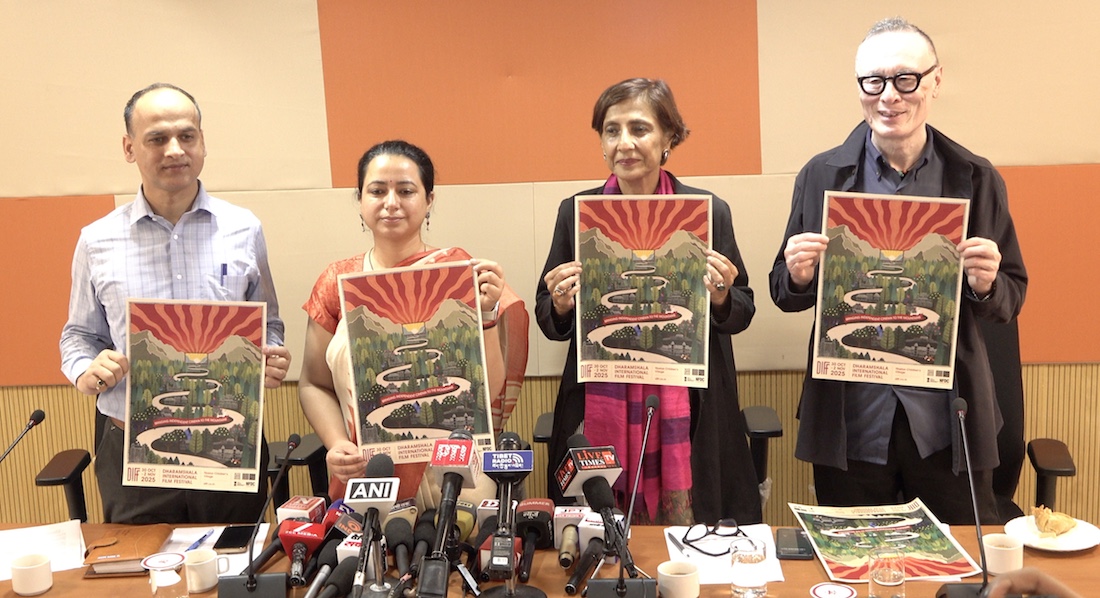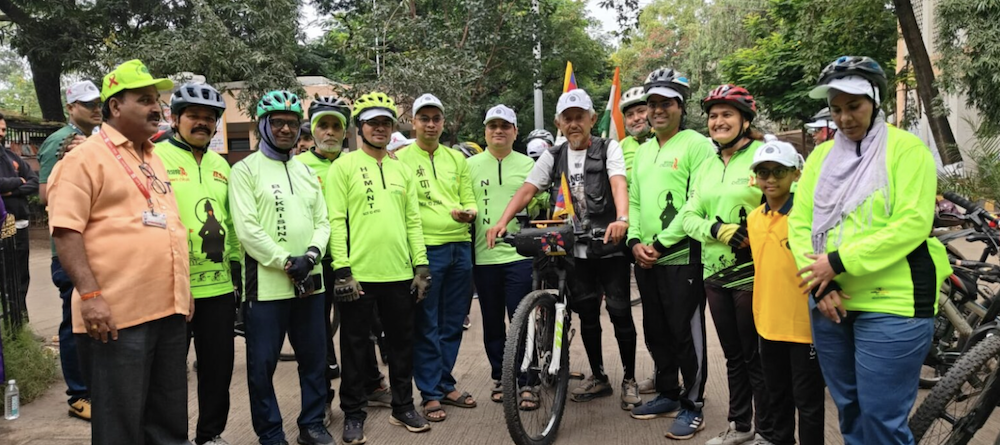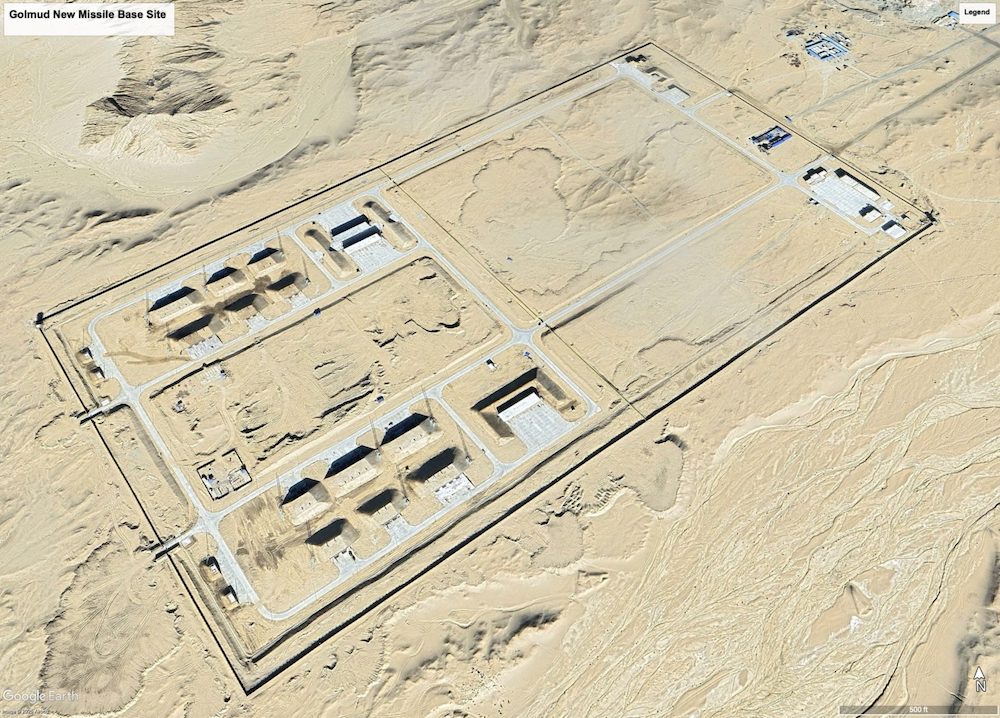By Colette Davidson
Minneapolis, June 14 – The Westminster Presbyterian Church in downtown Minneapolis held a captivated crowd of over one hundred as former Tibetan political prisoner Palden Gyatso spoke about his 33 years in the Chinese gulag. Set amongst a backdrop of a large Tibetan flag and gorgeous rose bouquets, Palden brought the audience to near-tears with his unbelievable stories of torture, confinement and survival. He showed, however, that the years of pain had done nothing to dampen his amazing spirit of compassion.
At 73 years old, Palden is one of the longest surviving Tibetan political prisoners in the world. When he was 28, only ten years after being ordained as a Buddhist monk, Palden took part in the Lhasa protest on March 10, 1959. That fateful day would be marked in history as Tibetan National Uprising Day, the day Tibetans took to the streets to protest the Chinese occupation of their country and a suspected plan to assassinate the Dalai Lama on the night of a military performance. For Palden, that was the last day he would see freedom for the next 33 years. Thousands were killed and Palden, along with others, was arrested for being a “reactionary” and forced into imprisonment at Panam District Prison, formerly known as the Norbu Monastery, in southern Tibet. There, he suffered unimaginable torture that led him to later give evidence at the United Nations Commission on Human Rights in Geneva in 1995 and to testify before the U.S. Congress, as well as to tell his story in the book, “Fire Under the Snow.”
While in prison, Palden started documenting the torture methods he had undergone or directly witnessed with hopes that someday he could inform the outside world about the true nature of Chinese prisons in Tibet. His sense of injustice and a promise to his fellow prisoners to keep their gruesome stories alive carried him all the way to Minneapolis.
At the beginning of Palden’s sentence in the early 1960’s, prison conditions were at their worst. Prisoners were given only a small ration of diluted barley broth (tsampa) to eat and family members of prisoners were instructed to supply firewood for cooking the food. The utensils used for eating were, under duress, the same ones used by prisoners to relieve themselves. In order to stay alive, many prisoners were forced to eat mice, insects, plants, even shoe leather. Palden remembers one ravenous prisoner taking a bite of a dead body in desperation.
The food conditions were only one part of the prisoners’ suffering. Unlike the Chinese prisoners who were handled with relative humanity, Tibetans were treated like animals, made to lift, carry and push extremely heavy items for long stretches of time. If someone protested, they were mercilessly prodded and beaten until they collapsed. Several prisoners died from overwork and those who weren’t dead were simply buried alive after collapsing from the intense fatigue.
By 1965, conditions had improved slightly in that prisoners were now offered an entire handful of ‘tsampa’ to eat and were occasionally allowed to see family members who would often bring them food. Unfortunately, the ruthless tortures hadn’t stopped. Palden regularly endured hours of interrogation and quizzing of the Maoist texts given to him by the Chinese prison officials. If his answers didn’t appeal to the officials, they would take off his clothes, tie his hands behind him with his legs pulled up to his chest, and hang him from the ceiling using a sort of pulley system. From here, guards would beat him with metal batons and laugh sadistically when his body’s frailty caused him to urinate or defecate.
Until 1981, torture practices had been their most brutal. Guards often splashed boiling water onto the prisoners’ skin and scorched them with burning sticks. Wearing clothes became unbearable and many prisoners died from infection. Prison guards equipped with electric prods normally used on cattle, routinely zapped prisoners during interrogations or manual labor. Several people lost their eyesight due to shocks directly administered to the eyes.
Besides electric cattle prods, Palden remembers a “special chair” that had electricity buzzing through it, used specifically for interrogating Tibetan prisoners. Prisoners were stripped naked and strapped down firmly onto the chair where their entire body would be shocked, as in an electric chair. When asked a few years ago in London how people hadn’t died from these electric shocks, he challenged an audience member to administer a low-level shock to his body using one of the torture devices he had brought with him. Although the audience member refused, Palden proved his point that electric shocks were deliberately given at a low level so that prisoners could be frequently tortured while still being kept alive.
On September 13, 1990, Palden experienced his worst torture to date and almost lost his life when he refused to dishonor the Dalai Lama and acknowledge Tibet as a part of China during an interrogation. An electric shock baton was forced down his throat and he lost consciousness, only to wake up in a pool of blood and his own excrement. He would come to lose 20 teeth. The Minneapolis crowd gasped as Palden adroitly pulled out his dentures and opened his mouth for all to see. “When one group forcibly took them out, another helped refurbish…these help me chew my food properly thus avoiding stomachaches,” he said, laughing. The dentures were a gift from Amnesty International.
Although Palden’s persecution was severe, he claimed that the abuse against the female prisoners was much worse. Many women were raped by prison guards or had electric cattle prods inserted into their genitals. Worse still, most of the female prisoners were Buddhist nuns who had taken oaths of celibacy. Several nuns reportedly committed suicide due to their suffering.
After sharing his own experiences, Palden discussed the current situation in Tibet including the Chinese government’s continuing violations of economic, social and cultural rights. Once a peaceful mountainous land of monks and nomads, Tibet is now a country bursting with Chinese economy and tourism. The Qinghai-Tibet railway has been completed, the achievement of a goal set by Mao Zedong more than 40 years ago and $4 billion later, as part of a strategy to dominate the region and integrate Tibet more successfully with China. Most products and books are written in Chinese and those who don’t speak the language of the occupying regime are made to feel inferior and ignorant, making the chances of finding even menial employment next to impossible. The Chinese government is also regulating population within the Tibetan community. Not only do women face numerous pressures from the Chinese authorities to limit the number of their children, possibly to one, they are being forced to have sterilizations and abortions.
Environmentally, Tibet faces equally large challenges. There are at least three or four nuclear missile launch sites in Tibet and an unknown number of warheads transforming this peace-loving nation into a vast military base. The region is being used as a dumping ground for nuclear waste from research facilities, while its fragile ecology and natural resources are being irreversibly destroyed and depleted through deforestation and overuse.
The turning point in Tibet’s history came in 1949, when the People’s Liberation Army of the PRC first crossed into Tibet. The presence of 40,000 troops in Tibet along with the threat of immediate occupation of Lhasa and total obliteration of the Tibetan state left Tibetans with few options. China officially occupied Tibet in 1959. To date, more than 1.2 million Tibetans have been killed, thousands are still imprisoned for exercising their fundamental rights and over 6,000 monasteries have been destroyed.
When the floor opened to the audience, Palden obsequiously answered every question ranging from his personal views on China’s political exploitation of the Dalai Lama’s Middle-Way Approach to his belief of complete independence for Tibet, and the boycotting of the 2008 Beijing Olympics for which he led a successful twelve-day hunger strike during the 2006 Winter Olympics in Torino, Italy.
As Palden’s presentation drew to a close, a smile returned comfortably to his face. Despite his intense suffering, Palden never once displayed anger towards the people who had beaten, abused or interrogated him for 33 long years. He simply believes that there is no room for anger in his life. Instead, he consoles himself with the fact that his torture was a result of something he did in his past life, and that Karma will take care of the rest. “I have no anger, not because I’m a Buddhist, but because being angry will bring me further bad Karma. There is no point in being angry towards anyone.”
Tibetan Youth Congress of Minnesota organized Palden’s visit with assistance from Mike Pittman and Koyoko, and Dr. Tsewang Ngodup was the interpreter.









